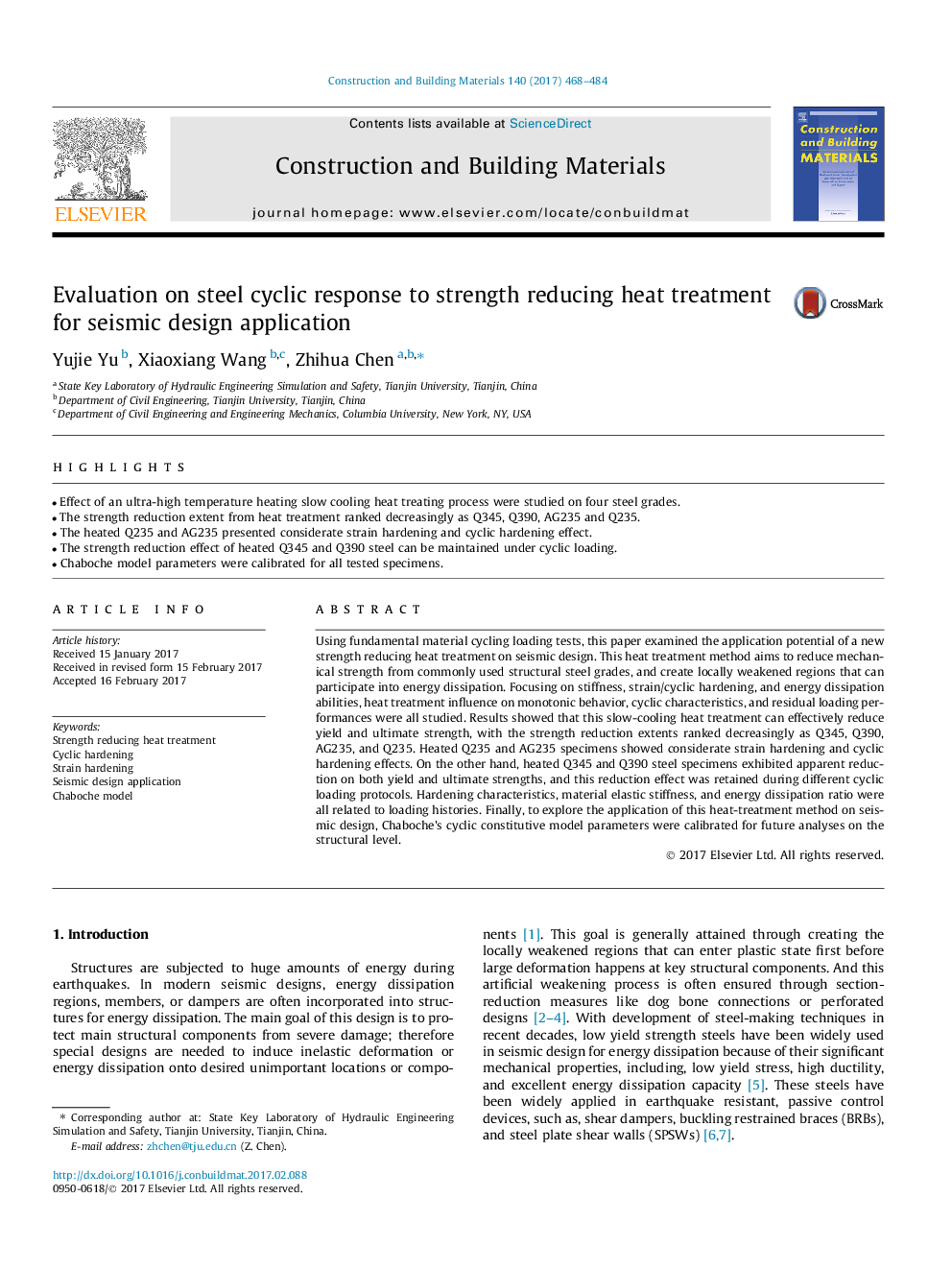| Article ID | Journal | Published Year | Pages | File Type |
|---|---|---|---|---|
| 4918485 | Construction and Building Materials | 2017 | 17 Pages |
Abstract
Using fundamental material cycling loading tests, this paper examined the application potential of a new strength reducing heat treatment on seismic design. This heat treatment method aims to reduce mechanical strength from commonly used structural steel grades, and create locally weakened regions that can participate into energy dissipation. Focusing on stiffness, strain/cyclic hardening, and energy dissipation abilities, heat treatment influence on monotonic behavior, cyclic characteristics, and residual loading performances were all studied. Results showed that this slow-cooling heat treatment can effectively reduce yield and ultimate strength, with the strength reduction extents ranked decreasingly as Q345, Q390, AG235, and Q235. Heated Q235 and AG235 specimens showed considerate strain hardening and cyclic hardening effects. On the other hand, heated Q345 and Q390 steel specimens exhibited apparent reduction on both yield and ultimate strengths, and this reduction effect was retained during different cyclic loading protocols. Hardening characteristics, material elastic stiffness, and energy dissipation ratio were all related to loading histories. Finally, to explore the application of this heat-treatment method on seismic design, Chaboche's cyclic constitutive model parameters were calibrated for future analyses on the structural level.
Related Topics
Physical Sciences and Engineering
Engineering
Civil and Structural Engineering
Authors
Yujie Yu, Xiaoxiang Wang, Zhihua Chen,
